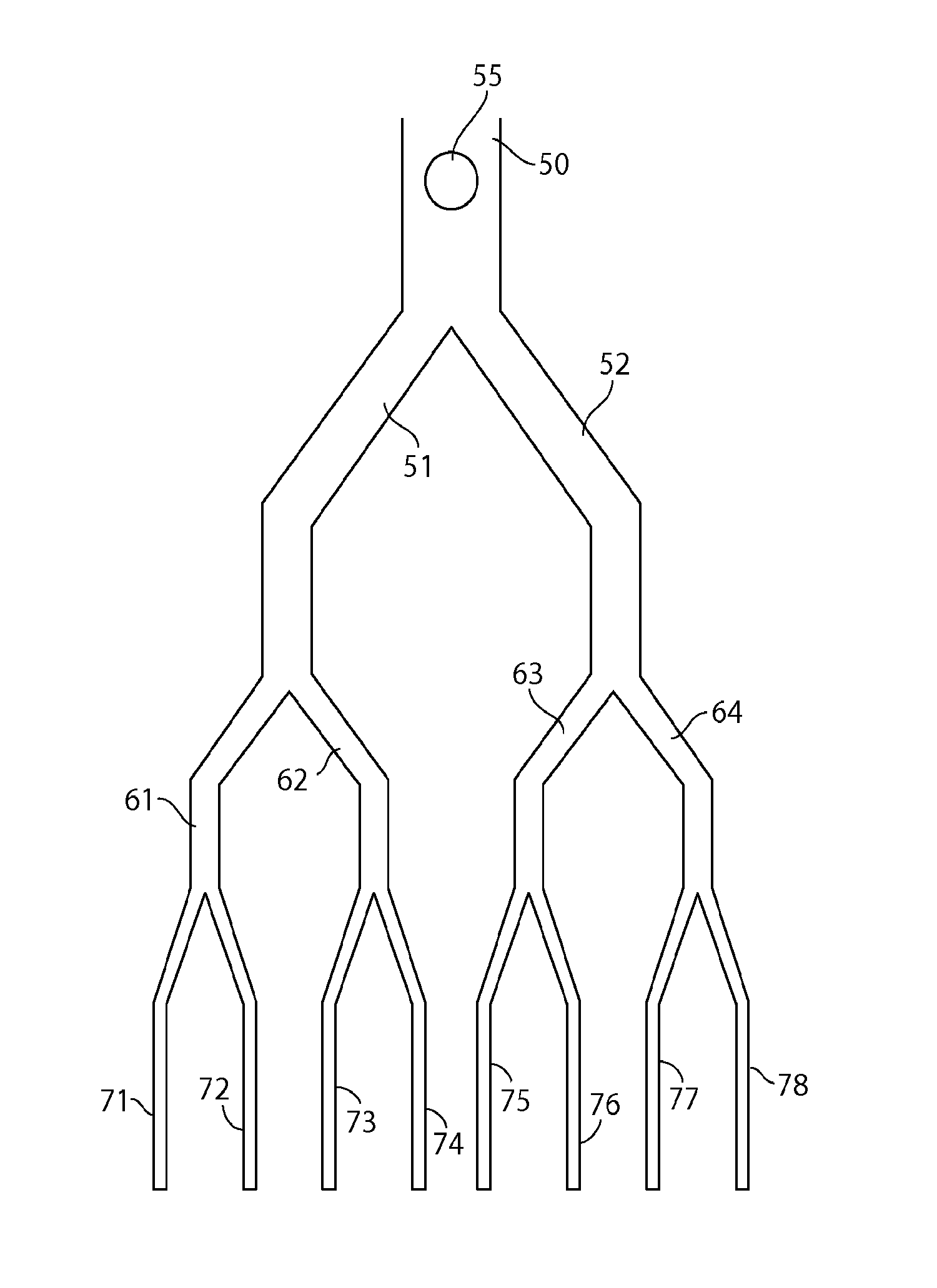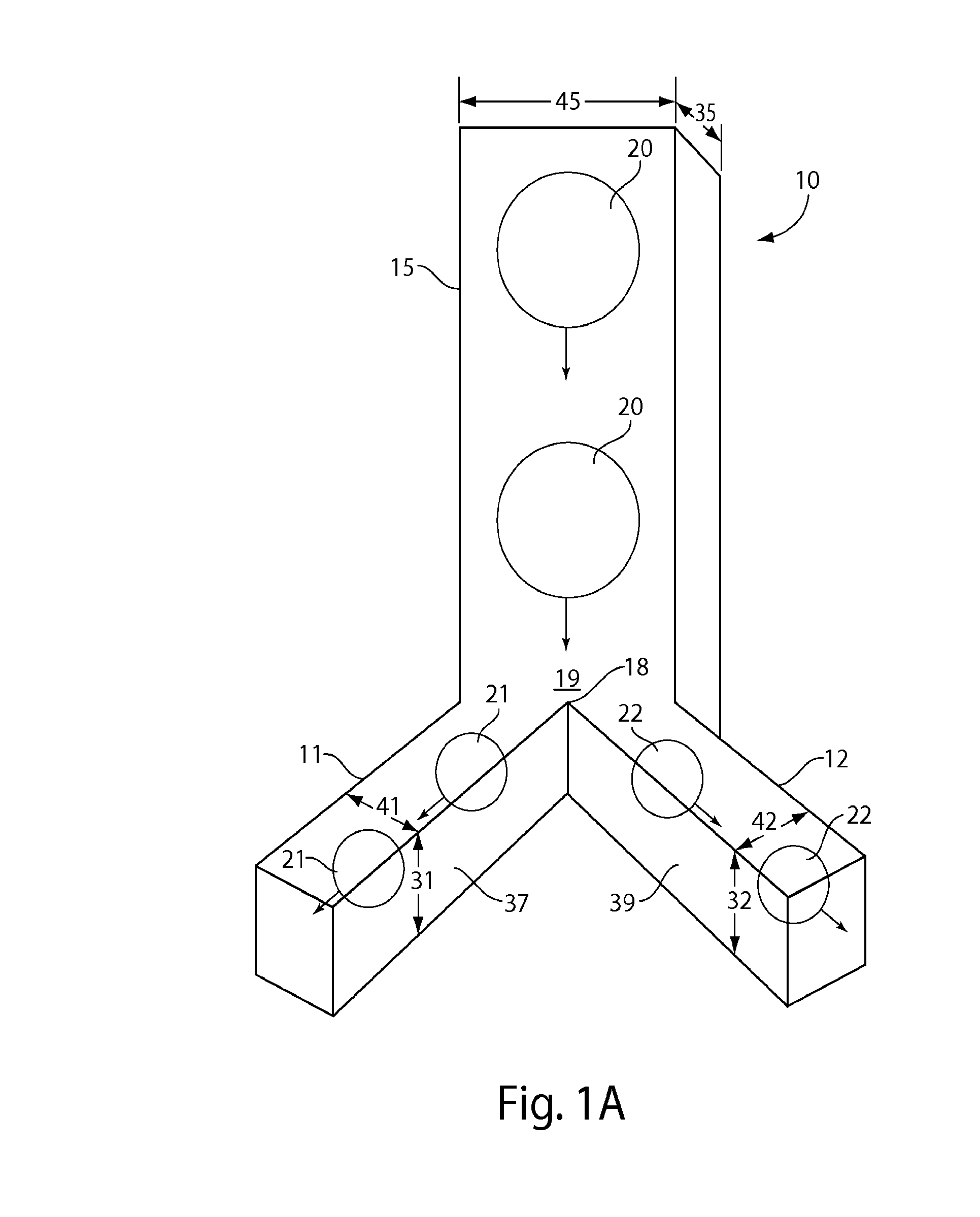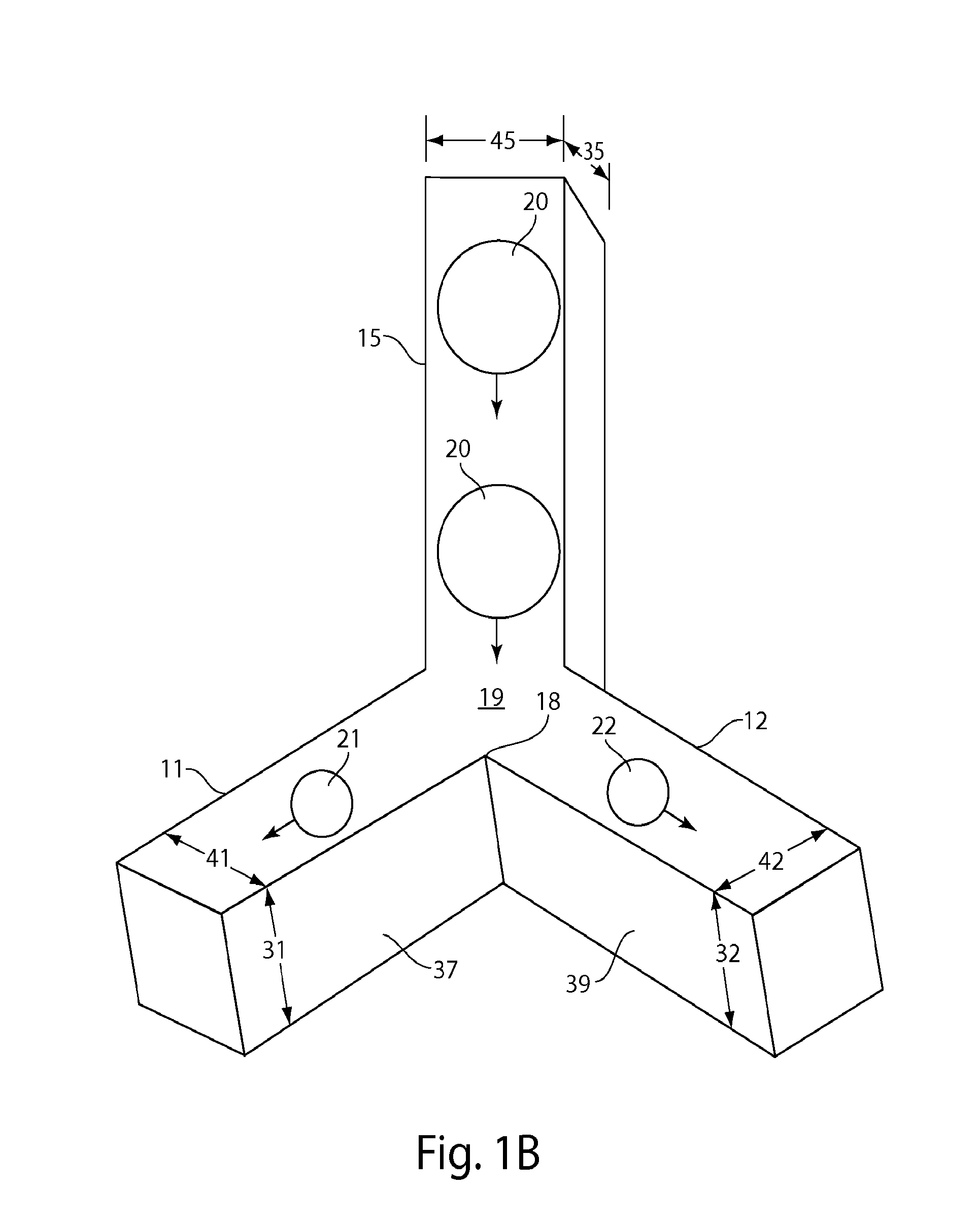Systems and methods for splitting droplets
a technology of system and droplet, applied in the field of fluidics and microfluidics, can solve the problems of difficult control of fluid flow in such systems, inconvenient production of large numbers of droplets, and insufficient use of techniques for large droplets
- Summary
- Abstract
- Description
- Claims
- Application Information
AI Technical Summary
Benefits of technology
Problems solved by technology
Method used
Image
Examples
example 1
[0103]Double emulsions are droplets that contain additional smaller droplets inside. Because of their small dimensions and core-shell structure, they are useful for applications requiring microencapsulation, including foods, cosmetics, and pharmaceuticals. With microfluidic devices, double emulsion droplets can be formed with controlled properties, including controlled dimensions and volume fractions. The droplets can also be efficiently filled with active materials: typically, encapsulations of 100% efficiency can be achieved, whereas, by contrast, bulk methods achieve less than 10% of the actives encapsulated. Nevertheless, there are disadvantages to this approach; an important example results from the small dimensions of the devices, which leads to droplets being formed at very slow rates. Double emulsions are typically only formed only at milliliters per hour, which may be too slow for some applications.
[0104]One way to increase throughput is to parallelize the devices. Rather t...
example 2
[0110]Splitting can also be used to increase the rate of production of double emulsification droplets. In this example, a splitting array was added to the end of a large drop maker, e.g., as discussed in Example 1, though this time it was a double emulsion maker. The double emulsion device included two cross-channel junctions connected in series, as shown in FIG. 4B and the upper row of images in FIG. 5. The device was fabricated in poly(dimethylsiloxane) using the techniques of soft lithography, as discussed herein. The double emulsion device operated ˜5× faster than a conventional drop maker; the slower speed of the double emulsion device, relative to the device of Example 1, was due to the fewer number of splitting junctions.
[0111]FIG. 5 illustrates image sequences of double emulsions being formed using one-step double emulsification (top row) and being split into smaller droplets using splitting junctions (lower rows). The device bisected the double emulsions three times into da...
example 3
[0115]In this example, to quantify the dynamics of splitting, the lengths of the droplets along their central axes were measured as a function of time. See FIGS. 6A and 6B, respectively, showing the lengths (L / w) of single and double emulsion droplets as a function of time, measured from their back interfaces to the apex of the split in the splitting junction. The lengths were normalized by the width of the channel leading into the junction. For the double emulsions, the lengths of both the outer droplets (Lout) and inner droplets (Lin) are provided. The experiment was also performed at different Capillary numbers, as labeled.
[0116]In these experiments, the single emulsion droplets entered the splitting junction appeared to have a sausage shape, because they were initially confined in the narrow inlet channel. As they entered the splitting junction, two lobes developed on each of the droplets; the droplets initially did not entirely plug the channels, but allowed the surrounding con...
PUM
 Login to View More
Login to View More Abstract
Description
Claims
Application Information
 Login to View More
Login to View More - R&D
- Intellectual Property
- Life Sciences
- Materials
- Tech Scout
- Unparalleled Data Quality
- Higher Quality Content
- 60% Fewer Hallucinations
Browse by: Latest US Patents, China's latest patents, Technical Efficacy Thesaurus, Application Domain, Technology Topic, Popular Technical Reports.
© 2025 PatSnap. All rights reserved.Legal|Privacy policy|Modern Slavery Act Transparency Statement|Sitemap|About US| Contact US: help@patsnap.com



